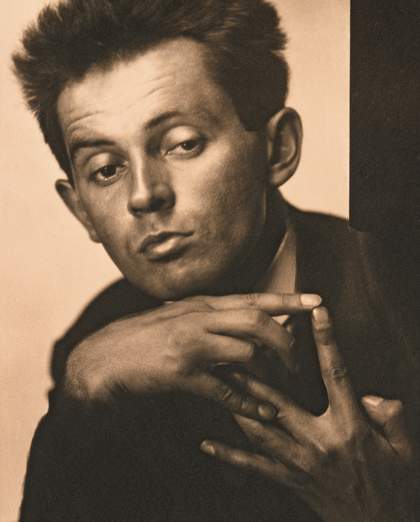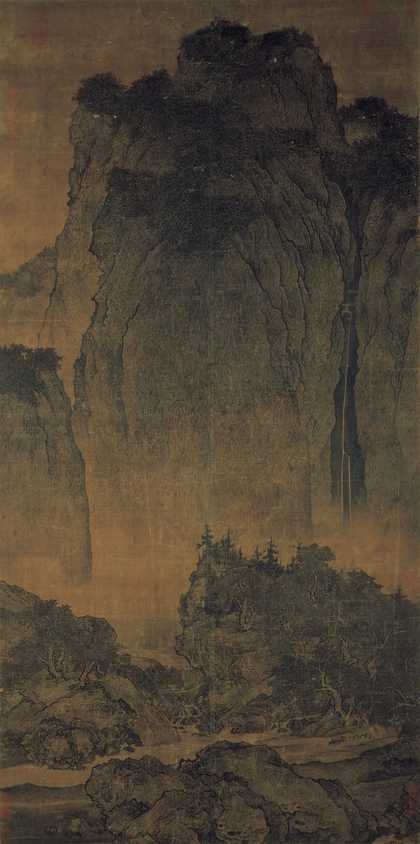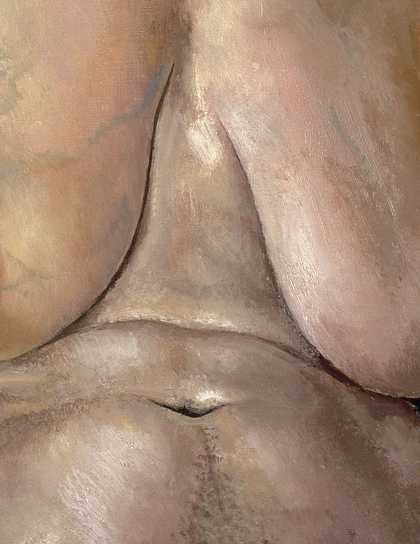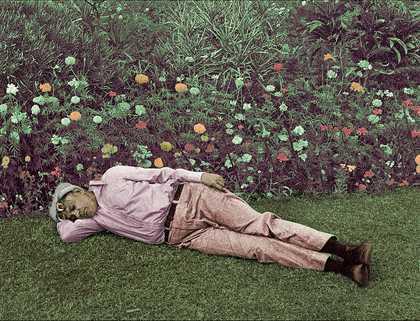After a period of concentrated work, during which I saw nearly no one, I decided to finally take myself to Siena, a city I had never visited and, indeed, deliberately avoided for the past two and a half decades. Several times, when staying with a friend who lives in the surrounding hills, I had been very close to it, but on each occasion I resisted the temptation, and on our excursions I made sure we never came close enough to catch even a distant view of the medieval walled city. All along, I kept the reasons for this strange abstinence to myself.
My fascination began when I was a university student in London; I became, for reasons that were unclear to me then, interested in Sienese paintings from the 13th, 14th and 15th centuries. These works stand at the border between the fading impact of the Eastern Church and the anticipation of the Renaissance. They are suspended between chapters. Perhaps this is why they seem alive; perhaps one is made more alert when waiting; and these are attentive paintings: porous to influence and contemplative of future possibilities. They are not painted from the centre of things. They are self-questioning, and therefore stand at odds with contemporary Tuscany, which often seems self-satisfied. Instead, Sienese art from that period has a naivety and even a crudeness about it that is perhaps necessary at those rare moments in our history when artists must reach beyond themselves.
Architectural space is organised in ways concerned with both the miniature and the infinite, such as the dream in which you find yourself captured in a complete spatial logic: a staircase without end, a room that is really a landscape. The works anticipate much of what was to come: the paintings of Caravaggio and de Chirico; the architecture of Hassan Fathy and Luis Barragán; Anthony Caro’s sculpture; you can even detect their unlikely echo in the cloistered and rudimentary quality of some of Luigi Nono’s music. And it seems their influence is yet to run its course. In fact, there is no better way of cleansing one’s palate before looking at any other painting at the museum than by spending a few minutes in front of a picture from the Sienese School.
Over the past two and a half decades, the pinks and yellows and blues, the delicate patterns, the suspended drama of these paintings, all gradually became necessary to me. Every few months I went to the National Gallery in order to look once more at Duccio’s The Annunciation 1307/8–11 or The Healing of the Man born Blind 1307/8–11. He was the spring from which Simone Martini, Pietro and Ambrogio Lorenzetti, and all the others flowed. Between them one can almost hear a conversation about what painting is, what a picture can and might do. You can detect their questioning about the extent to which a picture might, for example, rely on a viewer’s psychological life. They are, in other words, paintings that are hopeful about a stranger’s emotional intelligence and imagination. They are early examples of where the subjective life of the spectator is required to complete the picture. And although their subject is predominantly Christian iconography, they are more concerned with human life than with the Heavens. They are interested in the observational power of the Divine, the witnessing nature of God, but mainly in how this might express and reveal the theatre of human life. In this sense they are both modern and earthbound.
But the more my fascination with these paintings grew, the more Siena turned in my mind to occupy a place of uneasy reverence, the sort the devout might feel towards Mecca or Rome or Jerusalem. And therefore I became, out of an inherent lack of enthusiasm for pilgrimages, suspicious of my desire to visit the city. This only partly explains why, in the 25 years since I fell for its art, I have diligently avoided Siena. The other reason was purely practical. Given the depth of feeling I had for the place, and for the number of paintings there that I wanted to see (to say nothing of how long it takes me to look at any given picture), I could not go for just a day or two; not even a week would be enough. My first encounter had to be followed by a long stint of intimate engagement. Not less than, say, a month at the very least.
I rented an apartment in the heart of town. My routine became simple. I visited a church or a museum in the morning, then spent the rest of the day wandering through the city with no particular aim in mind. Siena began to feel like a living organism. I would go somewhere new and discover that I had been there before: I had merely come at it from a different angle and with a different intention. The city, therefore, was forever articulating that ever-present and simple fact about human life; that although one moment might resemble the next, and we might resemble our former selves, we are constantly being altered by time and the paths we take. I think this is why Siena and its paintings are conscious of the variety found in acts of remembrance and invention.
To excite my sense of the city, I decided to exit each day from one of the gates, walk into the country, and then return back into the fold of Siena’s streets and alleyways. No other place starts and ends so deliberately. Very early on in doing this, I walked to the southern edge into narrow streets, each descending. Suddenly I was by the wall that surrounds and protects the city. I looked out at the landscape beyond, the hills spreading wide and far, the moist air shimmering brilliantly in the light. I continued walking. I wanted to be among the cypress and olive trees. I found a handsome gate at a dead end, entered and was inside a cemetery.
Most of the headstones had a portrait of the deceased, sometimes two: one when young and another near the time of death. Many of the dead were buried beside their spouse.
What is it to remember the dead?
Some of these portraits belonged to people who had died decades ago, some over a century before, yet someone must still have visited for they were maintained and often adorned with flowers. There was a bench. I thought of taking a seat, but then continued. I passed a couple. I greeted them and they greeted me back. I decided I liked cemeteries, their seriousness and formality. I went to the edge, hoping to find a view of the open country. It turned out I had all along been in the old part of the cemetery, a small area in comparison to these vast terraces I was now looking down at: battalions and battalions of headstones. I found the scale unfathomable. Death’s endless appetite. The deceased outnumber the living by such a scale that the present suddenly seemed to me to be the golden rim of a cloth. How wonderfully outrageous it is to be alive. It filled me with dark pride and enthusiasm for my race, for how brave and heroic we are in the face of the undeniable evidence that life cannot be maintained. I recalled feeling something similar to this back when I had first begun to look at the paintings that now brought me here.
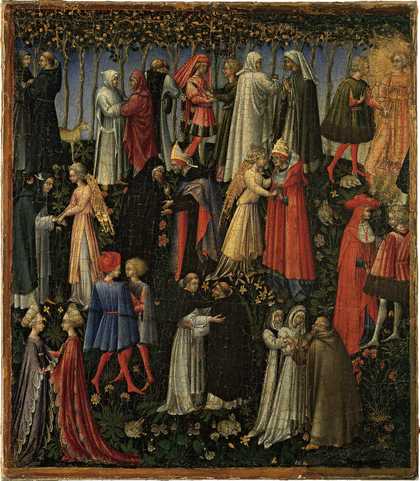
Giovanni di Paolo, Paradise 1445, tempera and gold on canvas, transferred from wood, 44.5 x 38.4 cm
© 2018. Image copyright The Metropolitan Museum of Art / Art Resource / Scala, Florence
The month ended and I returned to London and the rhythm of my days. I later had to go to New York on work, and was due to remain there for a couple of months. Shortly after I arrived, I met a couple of friends for dinner. I always try to see them as soon as I arrive in Manhattan. She is a respected human rights lawyer and he is a leading academic in one of the better universities. We met at a place they like to frequent, where the food is good. Notwithstanding their optimism, the optimism of successful people, they both, at an unexpected turn in the conversation, began to confess such inconsolable disappointments. Looking at one another, each listed, with that hint of blame and quiet violence that only couples in love are capable of, all the missed opportunities, the roads not taken, the now uncorrectable regrets.
The following morning was my day off. I woke up and spent a few minutes searching for cheap flights to Siena, wondering how I could possibly escape all my work commitments. I lay naked on the couch looking out of the window, then showered and returned there to dry off in the breeze. It had been a very warm night. At one point I heard a woman say, ‘We don’t want to get run over’, and then she repeated it in a childish manner. I stood, knowing that if she were to turn back and look up she would see a naked man in the window. I watched her run nervously with her two children, a boy and a girl, across an entirely deserted street.
I got dressed and walked to the Metropolitan Museum of Art, wanting to see a particular Sienese picture I had been reading about: Paradise by Giovanni di Paolo, painted around 1445. I found it quickly and without consulting a map or asking an attendant. I fear superstition as much as I do absolute rationalism – both are forms of tyranny – yet this coincidence inspired in me a momentary confidence that, regardless of all the emptiness one feels, I was somehow where I needed to be, found in the scattered assortment of things. The painting was much smaller than I had anticipated. I had not cared to consult the size in the online description. My impression was that it would be as tall as a 10-year-old, but in fact it was small enough to wrap in a newspaper, its surface rough and cracked.
The painting imagines a reunion in the hereafter. According to di Paolo, such a reunion would take place in twos, with each person facing the other, holding hands. The pairs are arranged in a sort of waltz in three horizontal rows: six couples on the top, four in the middle and four on the bottom. The painting organises the world vertically, as though the earth has become a façade, which is not atypical of how Sienese paintings manage the landscape, and is, no doubt, an influence from the East, where all values are equally represented and none diminish into a realistic perspective. Right at the top there is a glimpse of the horizon, curving innocently, and a row of apple trees fencing the sky. Now that we have gone full circle, the painting seems to say, the eating of apples is not only permitted but rather encouraged.
What is it for the dead to remember the living, to still be able to recognise those known when the soul was flesh?
The saintly are greeted and welcomed by angels; even their reunion is heavenly. Then there are men and women, like the spouses buried together in the cemetery, eagerly looking into each other. Other pairs seem to be of the same person but at different stages of life: the older self greeting the younger. Only one couple, a nun and a monk at the bottom right-hand corner of the frame, is accompanied by a third person, a younger nun who is restraining the older one. She has her arms wrapped around her as though trying to stop her from greeting the approaching monk. Could it be Héloïse and Abelard, the lovers who could only love from a distance? They had preceded di Paolo by some three centuries. I am sure he would have read their letters and known of Abelard’s desperate plea against writing, claiming it to be a weakness and a ‘disease’. She is not bothered by transgressions though. She is interested in appearance and disappearance: ‘We are much fonder,’ she writes to him, ‘of the pictures of those we love, when they are at a great distance, than when they are near to us.’ She tells him that: ‘If the portraits of our absent friends are pleasant to us … how much more pleasant are letters …’ And she is greedy, asks him, ‘Let me have a faithful account of all that concerns you.’
That must surely be the ambition of every true reunion, not only to identify and be identified, but also to have an accurate and comprehensive account of all that has come since the last encounter. The painting understands this. It knows that what we wish for most, even more than paradise, is to be recognised; that regardless of how transformed we had been by the passage, something of us sustains and remains perceptible to those we love. I think the entire history of art is the play of this desire. Each book and painting and symphony is an attempt to give a faithful account of all that concerns us.
Hisham Matar lives and works in London. His latest book The Return, published by Viking, received several awards, including a Pulitzer Prize.

